Ready to take on a new build? Here are the best Toyota project cars for every different genre in the scene.
Here at Fast Car, we’re all about project builds. Whether you want to create something that’ll tear up the track or drag strip, go sideways with ease, or just simply look cool, it’s entirely up to you. That’s the great thing about a project car – you can tailor it for a certain purpose, or use it to express your own individual enthusiasm for a particular driving style or visual genre. It’s what being a car enthusiast is all about.
Anyway, one of the most important brands in the project scene is Toyota. As one of the biggest car manufacturers in the world, Toyota has produced an incredible number of different models over the years, meaning that their back catalogue is stacked with ideal canvases for a wide variety of build types. They’re known to be mechanically reliable for the most part too, which is always a bonus, and let’s be honest, there’s a bit of street cred to be won with some of their more prestigious nameplates. With all that in mind, I’ve collated some of the best Toyota project cars that you should be considering for your next build.
How I chose these cars
In this round-up, I’ve tried to come up with vehicles that will satisfy all different potential types of build. So don’t expect a simple list of ten ideal drift cars. Of course, some feature, but I’ve also included models that are better suited to the touge, or the VIP genre – you’ll even find an overlanding gem in here too.
What makes me qualified to make these calls? Well, like you, I live and breath cars. Plus, I own a Toyota myself, so I’ve got a keen interest in the marque and first-hand experience with at least a few of the cars on this list. Our very own Slim Jules (Fast Car Head of Content) owned a Mk4 Supra back in the day too, so across the writing team, we’re pretty well versed in Toyota machinery.
Best Toyota Project Cars
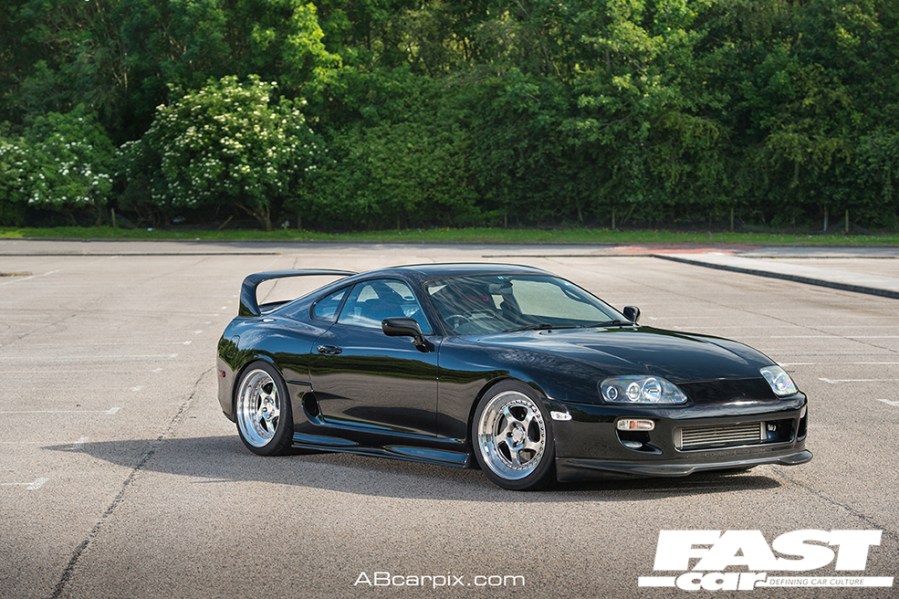
Toyota Supra Mk4
You saw this one coming, right? Let’s get it out of the way first then. The Mk4 Toyota Supra is arguably the most popular car (at least in terms of online reputation) that the Aichi-based marque has ever produced. And not without good reason. Sure, it helps that it played a starring role in The Fast and The Furious, but the reason why it was cast in that film in the first place is because it was a bona fide tuning hero.
The A80 Supra’s party piece is undoubtedly its engine, the 2JZ straight-six. In Supras, these came from the factory in two different specifications, with either a single turbo or a twin turbo setup: the latter producing 276hp. At least, that was the official claim. In some export markets, the true figure was more like 326hp. The real magic happens when you tune it though.
These days, 1000hp is a realistic goal for the 2JZ, assuming you’re willing to throw a ton of cash at it. As a result, these things can be mean on the drag strip. Or, if you only want half that power figure, or less, a Mk4 Supra will still make for an excellent street build. We probably wouldn’t suggest going down the track day route with this car though. It isn’t the most agile on its toes, and for the money there are so many better options if all you want to do is chase lap time.
Speaking of money, that’s the major downside to this car. The Mk4 Supra currently lies somewhere between cult and classic status, and as such, prices are quite simply insane. If you want a really nice one, you better have six figures to splash.
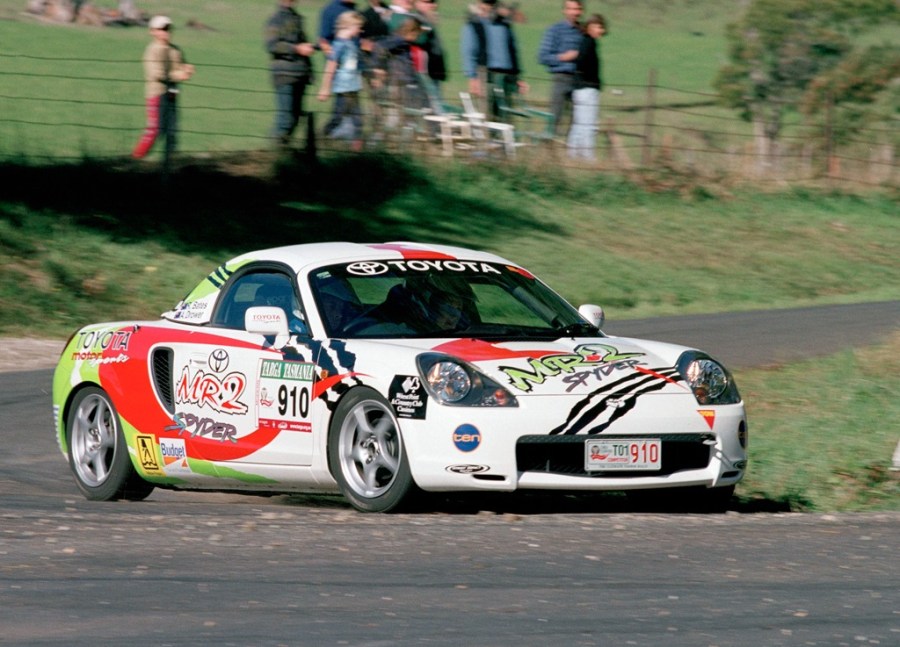
Toyota MR2 Mk3
On the other end of the price scale, there’s the third-generation Toyota MR2. These little roadsters have never really had much love, which I think is pretty harsh. When you break it down, there’s a lot to appreciate about the Mk3, despite its divisive frog-like looks. It’s a mid-engined car, which is great for weight distribution, and it’s rear-wheel drive too. That can certainly work in your favor on a track or during a touge session, but do be warned – snap oversteer is something that these cars can suffer from on the limit. So, if I were you, I’d really hone in on handling mods before turning your attention to the engine.
Engine Swaps
Sadly, the engine is where this car lets itself down. The stock 1ZZ is similar to that of the base model Mk7 Celica, meaning it only cranks out 140hp. There’s little that you can do to extract more ponies from this power unit, which is why many MR2 Mk3 owners opt for an engine swap.
The 2ZZ-GE from the higher-spec Mk7 Celica is a common choice. This raises stock performance to 190hp, and with mods you could reach approximately 220hp. That’s still not a lot, but is plenty to have fun with in a car that’s as lightweight as this one. Plus, the 2ZZ benefits from Toyota’s VVTL-I variable valve timing system, which is kinda like Honda’s N/A VTEC system. At around 6200rpm, lift kicks in, and you get a notable kick in performance up to the 8k redline. It won’t blow your mind like some of the more potent cars on this list, but it’s a bit of theatre which I personally love in my Celica. Alternatively, you could take on a more challenging ‘big block’ Camry swap for a higher peak potential, or if you’re feeling sacrilegious, you could K-swap it.
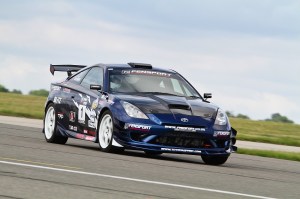
If you’re on a tight budget but don’t fancy an MR2, consider a 2ZZ Celica.
Need more practicality?
That all costs a fair amount of money, but the beauty of these Mk3 MR2s is that you can pick them up for low prices in the first place. And, if you want something more practical for the same money, it could be worth looking at a 2ZZ-powered Mk7 Celica. You will have to compromise with front-wheel drive, but if you can look past that, you’ll have a spacious coupe with the most common MR2 engine swap already done for you…
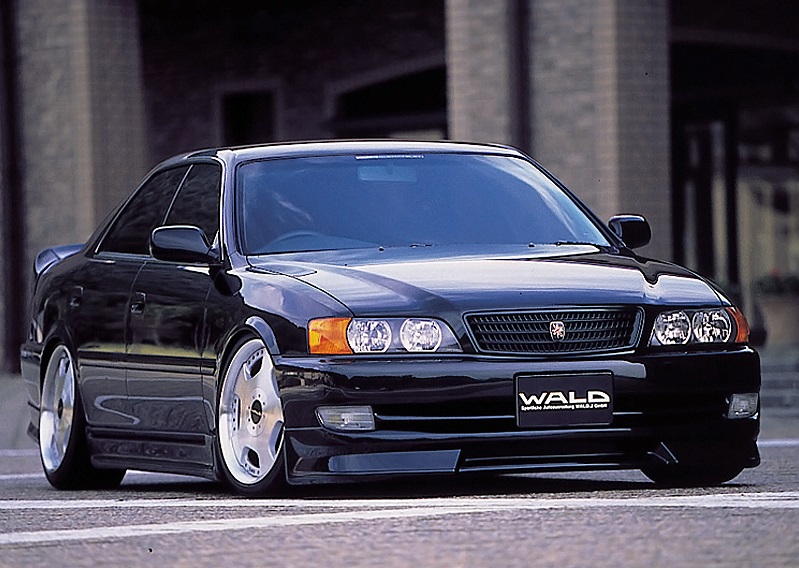
Toyota Chaser
The Toyota Chaser is a car which has undoubtedly suffered from the ‘JDM tax’ in recent years, but if you’ve got enough cash to get hold of the right spec, it’ll reward you with all sorts of possibilities. The big draw behind this executive sedan is the fact that you can find them with 1JZ N/A and single-turbo straight-six powertrains, which are related to the almighty 2JZ found in the Mk4 Supra. In fact, speaking of the 2J, if you’re lucky, you’ll find a Chaser with one of those bad boys under the hood instead!
Whichever xJZ engine floats your boat, there’s crazy tuning potential. Plus, although many Chasers came with an automatic transmission, there are examples out there with a five-speed manual. If you’re keeping track of these traits, it probably won’t come as a surprise to learn that they’re hugely popular drift cars worldwide. Sadly, this trend has led to a large number of Chasers succumbing to the harsh life of being a beat-up ‘drift missile’. That said, they are now legal to import to the US up to the 1998 model year, so if you can still find a healthy one, they represent a great opportunity wherever you are based on the planet.
Not into the whole drifting scene? Fair enough. Save yourself a few quid and get an automatic, then turn it into a VIP-style cruiser.
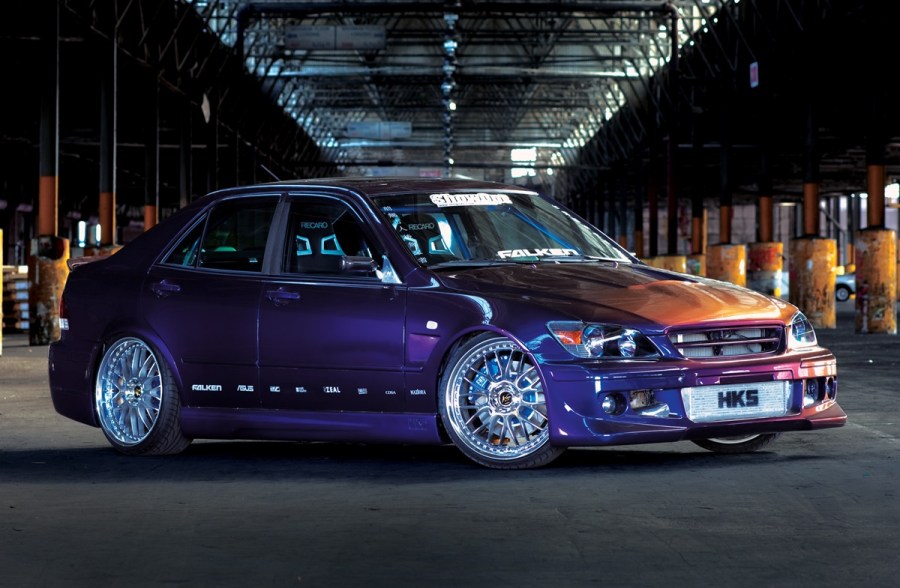
Toyota Altezza / Lexus IS
I’ll openly admit that as I’m writing this, I’ve got a browser tab open full of Lexus IS classified sales ads – which aren’t anything to do with the creation of this article. What I love about these cars is their accessibility, and the fact that they’re so multi-faceted. Want a cheap drift car? These are rear-wheel drive and can be had with a manual. Want something to waft about in in comfort, with the ability to hustle when you fancy it? These have a tuneful selection of six-pots, most of which are mated to an automatic transmission, and there’s loads of room inside to bring your mates along. In my opinion, they look great too, even today. Ever heard of the term ‘Lexus lights’ to describe clear taillights? That phrase comes from this car!
Toyota designed the Lexus IS to go head-to-head with the E46 3-Series, and as used market prospects, I’d say they’re pretty much on par in terms of desirability nowadays. IS 200s are typically the cheaper, more commonly found variant, being the base model. They are borderline slow, but will still do all the things I’ve listed above quite well. The IS 300, meanwhile, comes packing a naturally aspirated version of the Mk4 Supra’s 2JZ, and by now you shouldn’t need me to explain why that’s a good thing.
JDM Unicorn
If you’re feeling particularly hipster, you could also opt for a JDM-spec Toyota Altezza. This is what the IS was sold as in Japan. Interestingly, Altezzas open the door to a third choice of engine. The RS200-spec Altezza comes with the ‘Black Top’ 3S-GE four-cylinder, jointly developed with Yamaha. Although it’s down two cylinders compared to the rest of the line-up, this tough little engine produces between 197hp-207hp, depending on whether you get an automatic or manual version. That’s way more power than you’ll get in an IS 200, but just shy of the 217hp figure attributed to the IS 300.
One thing to be aware of though, is rust. The bodywork where the sill meets the rear wheel arch is a particular problem area, so be careful when shopping around.
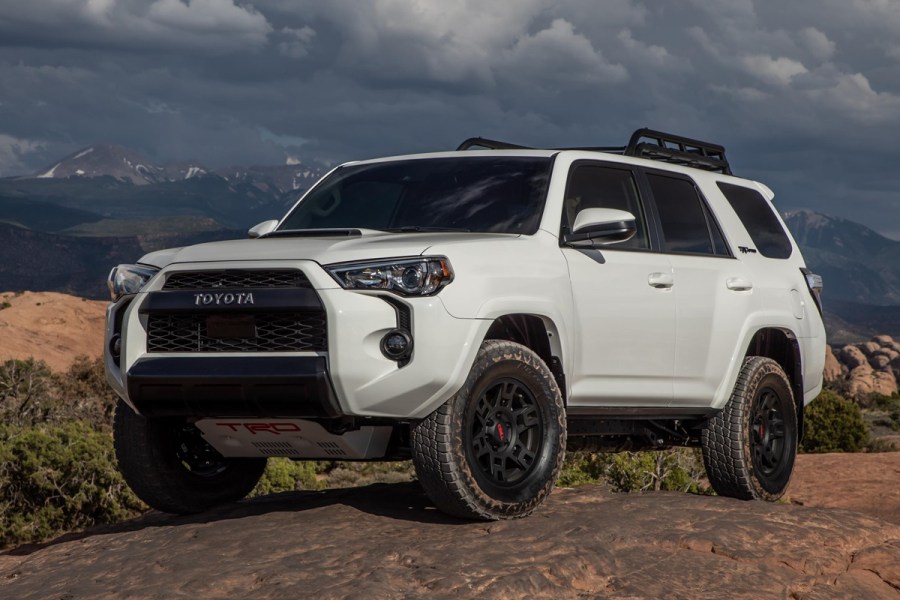
Toyota 4Runner
Is the 4Runner the most popular new-age overlanding vehicle? I’d argue it’s gotta be up there. The model name has been around for decades, but it’s the fifth-gen 2009-present iteration which appeals to me the most. For a start, they look brilliant, in a rough and ready kind of way, without coming across as super utilitarian. But their off-roading prowess is much more than skin-deep.
Since ’09 there has naturally been quite a few different variations on the theme. They’re all solid choices, but the one I’d go for is the post-2014 facelift Trail Edition. That version comes with loads of offroad-oriented goodies. Part-time 4WD is very welcome with this style of build, and other key draws include Crawl Control and Kinetic Dynamic Suspension. Crawl Control gives you assistance with the brake and the throttle when you’re trying to pull off an extreme low-speed maneuver. That way, you can concentrate almost entirely on steering and wheel placement. The Kinetic Dynamic Suspension System (KDSS), meanwhile, hydraulically adjusts its levelling whenever a wheel falls through a gap in terrain; the idea being that the car will retain regular stability.
If you want to add more exterior bulk and brawn, you’ll be delighted to learn that the aftermarket for 4Runners is extensive. Can’t get the 4Runner where you live? The many generations of Toyota Land Cruiser will more than suffice as an alternative. And if you’d rather a pickup to serve as the basis for your overlander build, consider starting out with either a Tacoma or a Hilux.
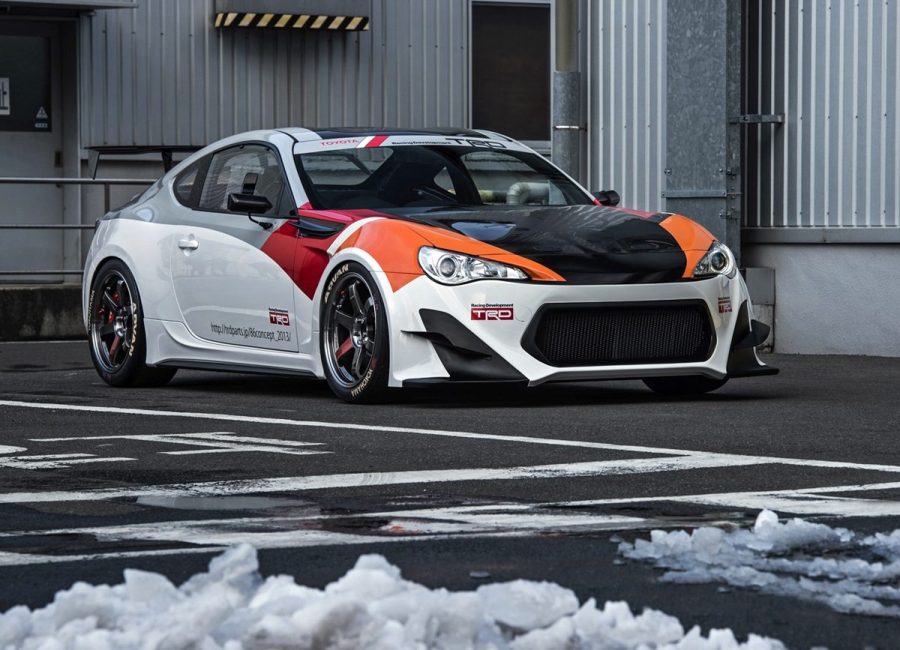
Toyota GT86 / Subaru BRZ / Scion FR-S
I can’t write a list of best Toyota project cars without mentioning the ‘Toyobaru’ triplets. Developed by Subaru, funded and designed by Toyota, the GT86/BRZ/FR-S is a delightful little enthusiast’s car. If there’s one car out there that’s craving modifications, it’s this one. When stock, it’s undeniably underpowered, but the core ingredients are all there. Rear-wheel drive, manual gearbox, limited-slip differential, and skinny standard tires make for a playful but controllable set-up. As such, if you want to enhance your own car control and general driving skills, this is a great model to practice with. And, given the fact that the first-gen cars only come with around 200hp, they aren’t likely to get you into too much trouble if you’re being vaguely sensible.
You could absolutely go down the drifting route with these cars, but they do still hold some value, so for now it could be wiser to focus on a street/touge build instead. If you ask me, the GT86 was the standout tuner car of the 2010s, and a big part of the reason as to why I say that is because of how massive the aftermarket is. Whether you want more power from the 4U-GSE boxer unit, race-worthy handling traits, or just a mad bodykit with air suspension, you’ll be spoilt for choice.
The current second-generation GR86s and BRZs (R.I.P. Scion) are slightly better cars out of the box, especially if you’re looking for a higher starting point in terms of engine output. These are still essentially brand new cars though, so they can be costly. Plus, depending on where you are in the world, they might be quite rare too. For that reason, the Mk1 remains the obvious choice for now if you’re after a project car.
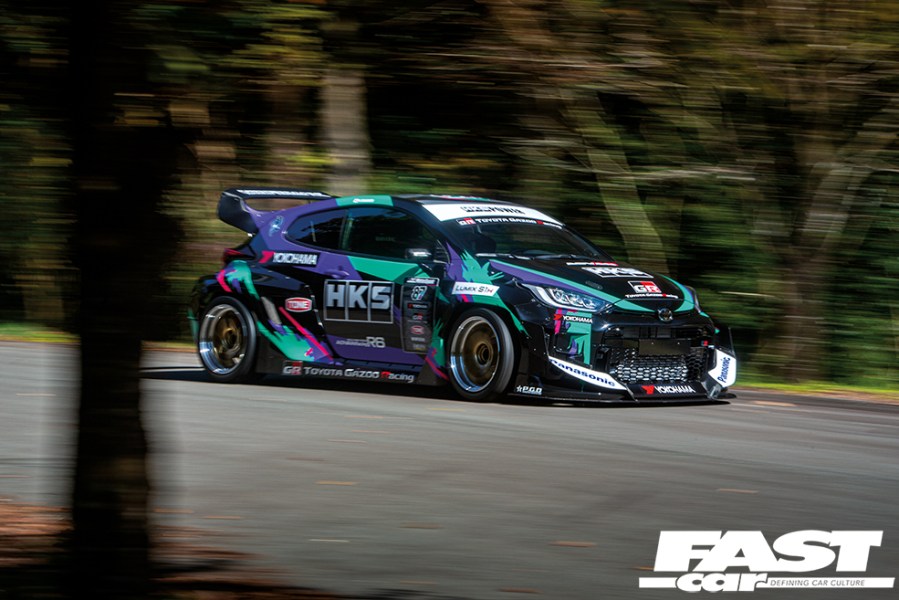
Toyota GR Yaris
Born out of Toyota’s dominant FIA World Rally Championship programme, the GR Yaris is not your average supermini. This big-hipped, stocky little car punches well above its weight thanks to an in-line 3-cylinder that churns out a mightily impressive 257–268hp, depending on regional markets. That engine hooks up to a six-speed manual gearbox, connected to a permanent all-wheel drive system. Exactly what you’d expect of a rally car for the road. Plus, it’s worth saying that although it shares a name with the average common or garden Yaris, the reality is that it’s actually more of a Yaris/C-HR/Corolla Frankenstein’s monster, developed by the Finnish folks that build Toyota’s rally cars.
Everyone that’s experienced a GR Yaris first-hand raves about the way it performs on back roads, thanks to its spritely chassis, pokey acceleration, and bundles of grip. So, once you start adding performance modifications, you’ll begin to start shocking the owners of much more premium-level cars. If it were me, I’d do exactly that and turn this thing into the ultimate B-Road warrior, but since this is effectively the modern day equivalent of an Impreza STI or Lancer Evo, why not go all in on the rallying identity? The GR Yaris would make for an excellent rallycross vehicle, or perhaps not even something that specialized. If you simply want a car to have fun with on loose surfaces, this car could be an absolute riot.
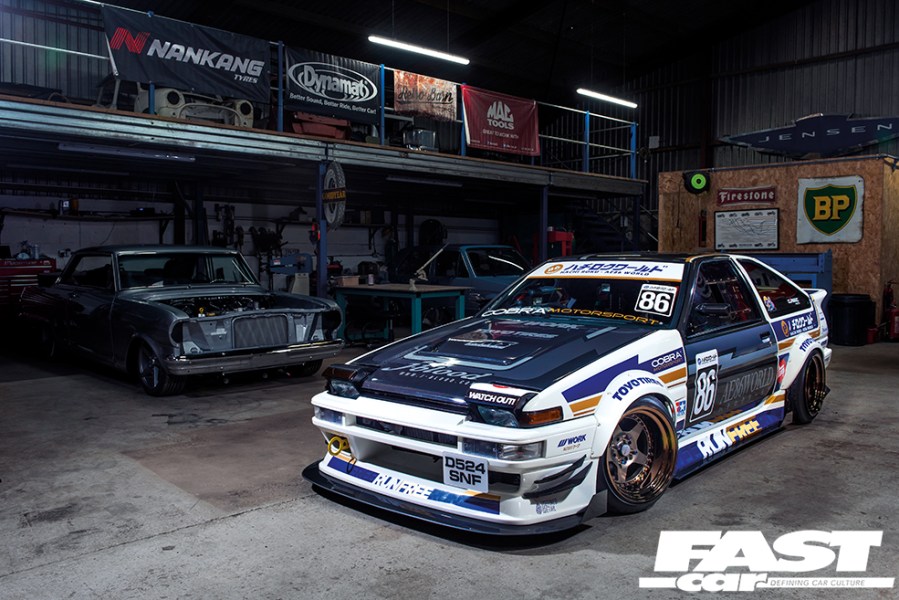
Toyota AE86 Corolla
You might think that a lot of the value attributed to this car comes down to hype, and you’d be right. Indeed, Takumi Fujiwara has a lot to answer for in the Corolla community. However, if inflated prices aren’t such a stumbling block for you, then the AE86 really does represent a slice of retro cool, that actually has some noteworthy potential.
Many people consider the GT86 to be the AE86’s spiritual successor (although people also said that about the Altezza when it was new, so come on, make your minds up guys!), and there are definitely some comparisons to be made. Like the GT86, the AE86 was intended to be an attainable entry-level sports car, with just enough power to make use of its playful rear-wheel drive platform.
Again, that makes it a great vehicle for someone to practice their driving skills with, and as the drift king himself Keiichi Tsuchiya will attest, the AE86 is highly capable of graduating in performance as your skills progress. These cars have been around for several decades now, meaning that there’s a wealth of tuning knowledge and aftermarket support to lean on. And hey, who doesn’t like pop-up headlights?! Well, if you answered, ‘me’, you should get a flat-fronted Levin instead of the more retro-looking Trueno fascia.
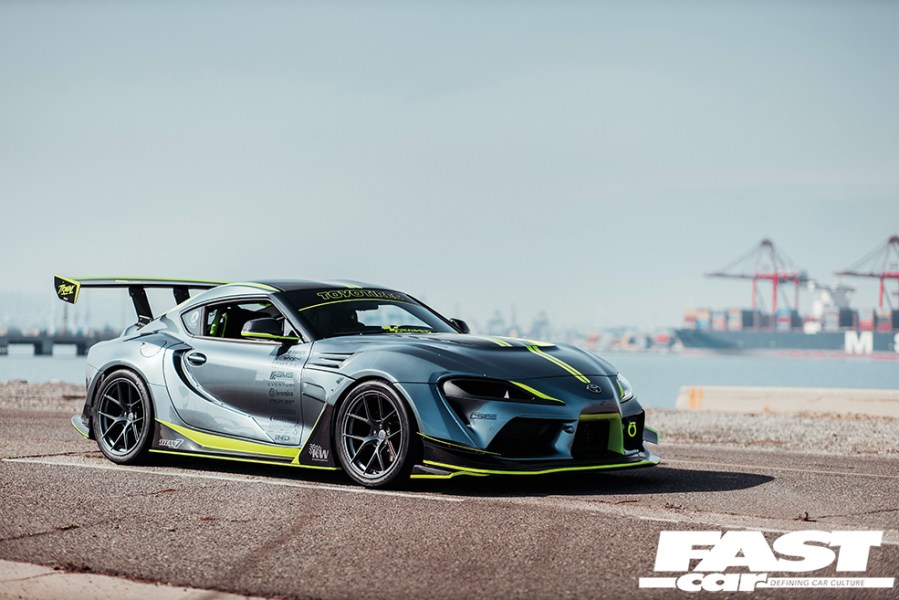
Toyota GR Supra
“tOyOtA?? Don’t you mean BMW?”
If that was your response to seeing this car, do everyone a favor, and grow up. Parts and platform sharing is common practice in the automotive industry, and while I agree that Toyota perhaps could’ve done a better job of hiding this in some areas, it seems like a very odd reason to disown a car. People who apply such binary logic to the GR Supra are either relatively new to how the car industry works, or are being intentionally ill-informed to stoke up irked responses like this one. That feels like a note on which to end this mini rant, so instead I’ll talk about the actual reasons why you might not like this car.
The main one is the way it feels to drive. The manual gearbox variant is a must-have due to the underwhelming nature of the automatic, and when you put it head to head with rivals like the Porsche Cayman or Alpine A110, it’ll fall behind through the twisty stuff. That said, it’s still a brilliant vehicle – one that I’d own in a heartbeat if I could afford it.
The Plus Side
Compared to the Nissan Z, the GR Supra feels like so much more of a ‘driver’s car’, albeit still perhaps slightly leaning into GT territory rather than being an outright performance coupe. As far as powertrain choices go, surely you’ve got to opt for the B58 straight-six? There is a 2.0-liter four-pot alternative, but if that’s the sort of budget you’re looking at, just get a GR86 instead. With up to 382hp under the hood when stock, the A90 Supra will smoke the A80 Mk4 in a straight line, and through corners, but like the A80, it also has an impressive aftermarket. Admittedly, the B58 engine isn’t quite as well-renowned for durability and peak potential as the 2JZ, but it’ll still reach close to 800hp when fully built. To match the 2JZ’s four figure potential though, you’ll likely need to do an S58 swap.
Being a new sports car, GR Supras are still quite pricey, but if you do have deep pockets, you’ll find that there are plenty of routes you can go down when it comes to the build. The internet is rife with widebody drift cars, but I think the A90’s better suited to a fast road upgrade.
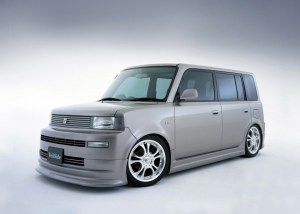
Toyota Bb / Scion xB
To end, let’s bring everything back down to reality. Are you working with a small budget? Does your project car also need to be your practical daily driver? Do you refuse to acknowledge the existence of the Honda Fit? If so, then the Toyota Bb / Scion xB is the car for you!
At first, you might think I’m crazy to suggest this cereal box on wheels, but let me explain. First of all, let’s address the looks. I understand that this is the sort of car you’ll either love or hate, a bit like the Nissan Cube. But if you need any extra convincing, just think of all the extra headroom and carrying capacity this car has thanks to its boxy frame! And personally, even without those benefits, I think there’s something quite endearing about such a simple design.
1NZ-FE tuning
Ok, so that’s the practical bit ticked. Now what about the fun bit? Well, the Bb/xB is equipped with a 1.5-liter 1NZ-FE four-cylinder engine, unless you get the 1.3-liter JDM-spec engine, which is worse. So, don’t get that one. Again, on first impressions, the 1NZ doesn’t sound all that interesting, especially given its ~100hp stock rating. However, as the 1NZ was intended for economy cars, its factory tune is incredibly conservative. Once you start tapping into the ECU and adding a few bolt-on mods, all of a sudden you’re looking at something more akin to a mid-2000s hot hatch. In fact, some daring engine builders have squeezed more than 300hp out of the 1NZ-FE, but let’s say you wanted to stick near the 200hp-mark to preserve durability, that’s still a decent amount of punch for a car like this!
At this point, I should also point out that it’s worth addressing the chassis of the Bb/xB too. These aren’t sports cars, so if you’re adding more power, you’re going to need to help the car put it all down to the ground in a controlled manner. Ultimately though, with a bit of investment and a little creativity, you’ll be chopping tuned Fits before you know it.





